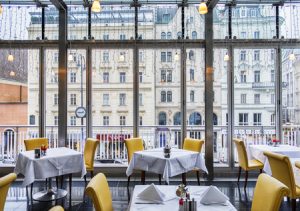 The golden age of hotels brought us ornate and lavish features including large moldings, vast amounts of granite (among other stones), and gilded hardware. These statements of style are almost but a memory, but still have an impact on design today.
The golden age of hotels brought us ornate and lavish features including large moldings, vast amounts of granite (among other stones), and gilded hardware. These statements of style are almost but a memory, but still have an impact on design today.
In contrast, during the traveling era of the 1950’s and 60’s, many families would spend weeks at a time on the road. Driving from county to county until they reached a hotel or motel on the side of the road. The group would catch some shut eye and hit the road at first light to their next stop.
This period of lodging was based around minimalistic needs and price, rather than comforts and luxury.
The first brought sophistication and exclusivity. The latter turned hotels into an industry for all to join in. Now, it’s changing again.
The New Era
In the era of the millennial traveler we seemingly have a merger of the two. Business travelers still do look for a place to rest their head in between work, and families are looking to find affordable hotels.
For some traveling Millennials old is new and a unique experience with each stay is at the top of the checklist.
With hotels bidding for guests’ attention, it can be difficult to attract guests during the industry’s identity crisis. The solution?
Fuse the experiences together to form a new experience for a new patron.
Finding the Core Desires
Fortunately, the two examples had drastically different approaches to dealing with guests. Before you think this is a negative, think again. The polarized needs help you identify what current guests want in terms of design.
Luxury
It’s obvious that early hoteliers focused on providing a one of a kind experience for guests. This included everything their eyes came in contact with from floor to ceiling. While most new travelers don’t want to stay in a 100+ year old hotel, you can be sure they want to feel like everything is quality.
From the lobby to their room, everything has to be modern, clean and smooth. Spa like bathrooms, functional and beautiful furniture, and great features. They’ll also want to feel the quality in the craftsmanship. Poor quality materials and hardware can give a cheap feel to an otherwise beautiful design. One way to make your design stand out to guests is with quality door hardware that creates clean lines and adds a touch of elegance and sophistication to your rooms and common areas.
Simplicity
On the other side of the coin, those same travelers don’t want to be bogged down with processes and other issues. Streamlining the check-in/check-out procedures, designing large open spaces meant for a laptop crowd, and always having a power supply close by will meet all of the practical needs of the passing through traveler.
A place to grab a bite to eat near the lobby, a USB port right by the bed, and not having to ask the whereabouts of certain necessities will keep the road warriors happy.
Connectivity
In the golden age of hotels with the classic styles connectivity meant telegrams quickly delivered to important guests. Today it is a fast and secure Wi-Fi. Travelers today are used to be always being connected to the world around them through social media and electronic communications. A fast (and complimentary) Wi-Fi can mean the difference between a traveler choosing your hotel or not.
If your hotel can bring luxury, excellent service, a unique experience and connectivity together you will be on the fast track to serving more guests and business growth. At SOSS we can help with the unique experience by giving you quality door hardware that appears in some of the world’s great hotels such as Marina Bay Sands in Singapore and Trump International Hotel and Tower in Vancouver.
If you are interested in learning more about hospitality trends take a moment to download our free special report on the hospitality design trends.